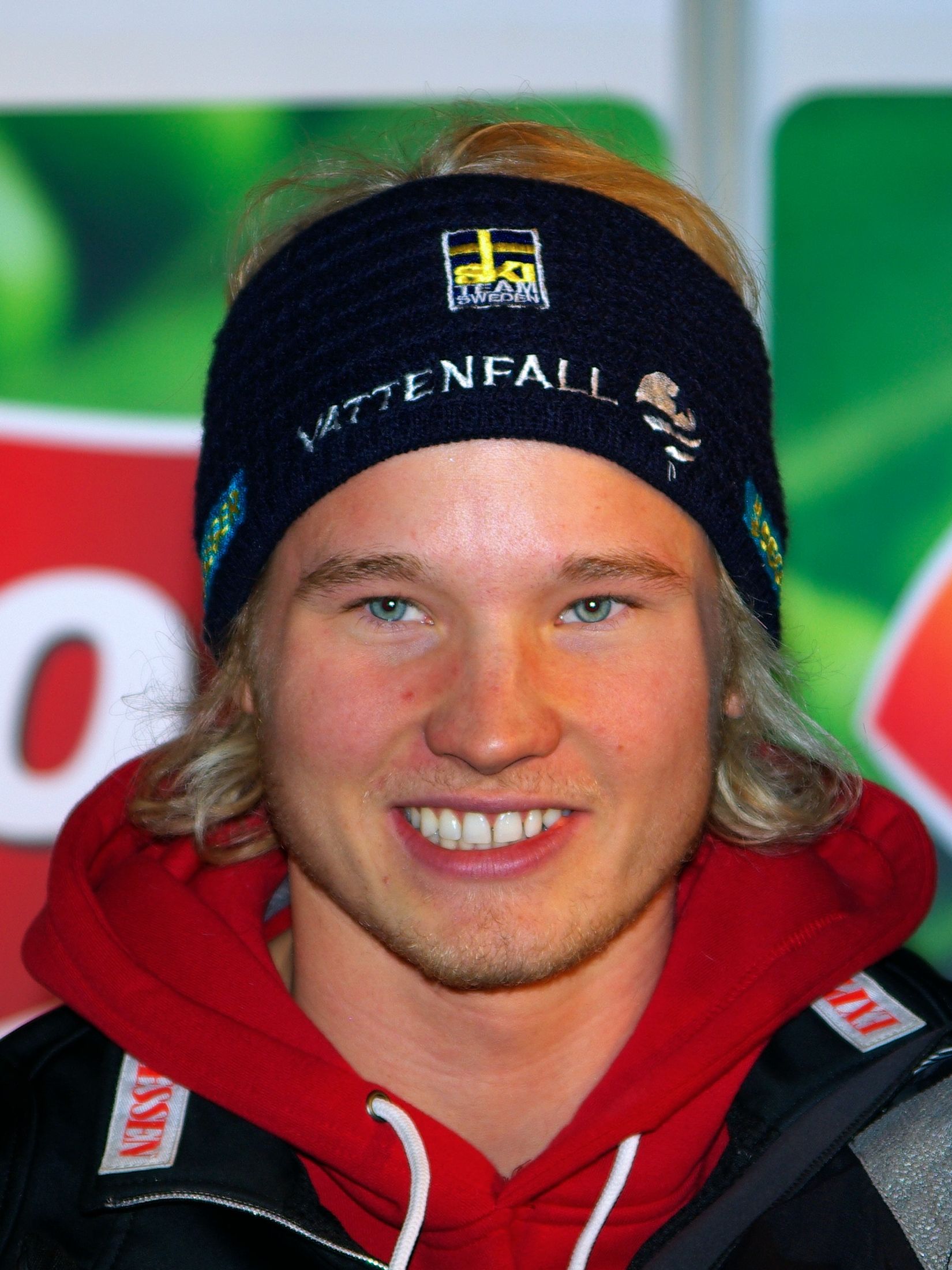|
Pseudostrabismus
Pseudostrabismus is the false appearance of crossed eyes. When the eyes are actually crossed or not completely aligned with one another, it is called strabismus. Pseudostrabismus is more likely to be observed in East Asian or Native American infants, due to the presence of epicanthic folds obscuring the medial aspect of each eye. Pseudostrabismus generally occurs in infants and toddlers, whose facial features are not fully developed. The bridge of their nose is wide and flat, creating telecanthus (increased distance between medial canthus of both eyes). With age, the bridge will narrow, and the epicanthic folds in the corner of the eyes will go away. This will cause the eyes to appear wider and thus not have the appearance of strabismus. To detect the difference between strabismus and pseudostrabismus, clinicians use a flashlight to shine into the child's eyes. When the child is looking at the light, a reflection can be seen on the front surface of the pupil. If the eyes are ali ... [...More Info...] [...Related Items...] OR: [Wikipedia] [Google] [Baidu] |
Strabismus
Strabismus is a vision disorder in which the eyes do not properly align with each other when looking at an object. The eye that is focused on an object can alternate. The condition may be present occasionally or constantly. If present during a large part of childhood, it may result in amblyopia, or lazy eyes, and loss of depth perception. If onset is during adulthood, it is more likely to result in diplopia, double vision. Strabismus can occur due to muscle dysfunction, farsightedness, problems in the brain, trauma or infections. Risk factors include premature birth, cerebral palsy and a family history of the condition. Types include esotropia, where the eyes are crossed ("cross eyed"); exotropia, where the eyes diverge ("lazy eyed" or "wall eyed"); and hypertropia or hypotropia where they are vertically misaligned. They can also be classified by whether the problem is present in all directions a person looks (comitant) or varies by direction (incomitant). Diagnosis may be mad ... [...More Info...] [...Related Items...] OR: [Wikipedia] [Google] [Baidu] |
Human Eye
The human eye is a sensory organ, part of the sensory nervous system, that reacts to visible light and allows humans to use visual information for various purposes including seeing things, keeping balance, and maintaining circadian rhythm. The eye can be considered as a living optical device. It is approximately spherical in shape, with its outer layers, such as the outermost, white part of the eye (the sclera) and one of its inner layers (the pigmented choroid) keeping the eye essentially light tight except on the eye's optic axis. In order, along the optic axis, the optical components consist of a first lens (the cornea—the clear part of the eye) that accomplishes most of the focussing of light from the outside world; then an aperture (the pupil) in a diaphragm (the iris—the coloured part of the eye) that controls the amount of light entering the interior of the eye; then another lens (the crystalline lens) that accomplishes the remaining focussing of light in ... [...More Info...] [...Related Items...] OR: [Wikipedia] [Google] [Baidu] |
East Asian
East Asia is the eastern region of Asia, which is defined in both geographical and ethno-cultural terms. The modern states of East Asia include China, Japan, Mongolia, North Korea, South Korea, and Taiwan. China, North Korea, South Korea and Taiwan are all unrecognised by at least one other East Asian state due to severe ongoing political tensions in the region, specifically the division of Korea and the political status of Taiwan. Hong Kong and Macau, two small coastal quasi-dependent territories located in the south of China, are officially highly autonomous but are under Chinese sovereignty. Japan, Taiwan, South Korea, Mainland China, Hong Kong, and Macau are among the world's largest and most prosperous economies. East Asia borders Siberia and the Russian Far East to the north, Southeast Asia to the south, South Asia to the southwest, and Central Asia to the west. To the east is the Pacific Ocean and to the southeast is Micronesia (a Pacific Ocean ... [...More Info...] [...Related Items...] OR: [Wikipedia] [Google] [Baidu] |
Indigenous Peoples Of The Americas
The Indigenous peoples of the Americas are the inhabitants of the Americas before the arrival of the European settlers in the 15th century, and the ethnic groups who now identify themselves with those peoples. Many Indigenous peoples of the Americas were traditionally hunter-gatherers and many, especially in the Amazon basin, still are, but many groups practiced aquaculture and agriculture. While some societies depended heavily on agriculture, others practiced a mix of farming, hunting, and gathering. In some regions, the Indigenous peoples created monumental architecture, large-scale organized cities, city-states, chiefdoms, State (polity), states, Realm, kingdoms, republics, Confederation, confederacies, and empires. Some had varying degrees of knowledge of engineering, architecture, mathematics, astronomy, writing, physics, medicine, planting and irrigation, geology, mining, metallurgy, sculpture, and gold smithing. Many parts of the Americas are still populated by Indigeno ... [...More Info...] [...Related Items...] OR: [Wikipedia] [Google] [Baidu] |
Epicanthic Folds
An epicanthic fold or epicanthus is a skin fold of the upper eyelid that covers the inner corner (medial canthus) of the eye. However, variation occurs in the nature of this feature and the possession of "partial epicanthic folds" or "slight epicanthic folds" is noted in the relevant literature.Lang, Berel (ed.) (2000) ''Race and Racism in Theory and Practice'', Rowman & Littlefield, p. 10 Various factors influence whether epicanthic folds form, including ancestry, age, and certain medical conditions. Etymology ''Epicanthus'' means 'above the canthus', with epi-canthus being the Latinized form of the Ancient Greek : 'corner of the eye'. Classification Variation in the shape of the epicanthic fold has led to four types being recognised: * ''Epicanthus supraciliaris'' runs from the brow, curving downwards towards the lachrymal sac. * ''Epicanthus palpebralis'' begins above the upper tarsus and extends to the inferior orbital rim. * ''Epicanthus tarsalis'' originates at ... [...More Info...] [...Related Items...] OR: [Wikipedia] [Google] [Baidu] |
Medial (anatomy)
Standard anatomical terms of location are used to unambiguously describe the anatomy of animals, including humans. The terms, typically derived from Latin or Greek roots, describe something in its standard anatomical position. This position provides a definition of what is at the front ("anterior"), behind ("posterior") and so on. As part of defining and describing terms, the body is described through the use of anatomical planes and anatomical axes. The meaning of terms that are used can change depending on whether an organism is bipedal or quadrupedal. Additionally, for some animals such as invertebrates, some terms may not have any meaning at all; for example, an animal that is radially symmetrical will have no anterior surface, but can still have a description that a part is close to the middle ("proximal") or further from the middle ("distal"). International organisations have determined vocabularies that are often used as standard vocabularies for subdisciplines of anatom ... [...More Info...] [...Related Items...] OR: [Wikipedia] [Google] [Baidu] |
Toddler
A toddler is a child approximately 12 to 36 months old, though definitions vary. The toddler years are a time of great cognitive, emotional and social development. The word is derived from "to toddle", which means to walk unsteadily, like a child of this age. Developmental milestones Toddler development can be broken down into a number of interrelated areas. There is reasonable consensus about what these areas may include: * Physical: growth or an increase in size. * Gross motor: the control of large muscles which enable walking, running, jumping and climbing. * Fine motor: the ability to control small muscles; enabling the toddler to feed themselves, draw and manipulate objects. * Vision: the ability to see near and far and interpret what is seen. * Hearing and speech: the ability to hear and receive information and listen ( interpret), and the ability to understand and learn language and use it to communicate effectively. * Social: the ability to interact with the world thro ... [...More Info...] [...Related Items...] OR: [Wikipedia] [Google] [Baidu] |
Telecanthus
Telecanthus, or dystopia canthorum, refers to increased distance between the inner corners of the eyelids (medial canthi), while the inter-pupillary distance is normal. This is in contrast to hypertelorism, in which the distance between the whole eyes is increased. Telecanthus and hypertelorism are each associated with multiple congenital disorders. The distance between the inner corners of the eyelids is called the intercanthal distance. In most people, the intercanthal distance is equal to the width of each eye (the distance between the inner and outer corners of each eye). The average interpupillary distance is 60–62 millimeters (mm), which corresponds to an intercanthal distance of approximately 30–31 mm. ''Traumatic telecanthus'' refers to telecanthus resulting from traumatic injury to the nasal-orbital-ethmoid (NOE) complex. The diagnosis of traumatic telecanthus requires a measurement in excess of those normative values. The pathology can be either unilateral or bila ... [...More Info...] [...Related Items...] OR: [Wikipedia] [Google] [Baidu] |
Canthus
The canthus (pl. canthi, palpebral commissures) is either corner of the eye where the upper and lower eyelids meet. More specifically, the inner and outer canthi are, respectively, the medial and lateral ends/angles of the palpebral fissure. The bicanthal plane is the transversal plane linking both canthi and defines the upper boundary of the midface. Etymology The word ' is the Latinized form of the Ancient Greek ('), meaning 'corner of the eye'. Population distribution The eyes of those of East Asian and some Southeast Asian people tend to have the inner canthus veiled by the epicanthus. In the Caucasian or double eyelid, the inner corner tends to be exposed completely. Commissures * The ''lateral palpebral commissure'' (commissura palpebrarum lateralis; external canthus) is more acute than the medial, and the eyelids here lie in close contact with the bulb of the eye. * The ''medial palpebral commissure'' (commissura palpebrarum medialis; internal canthus) is prolon ... [...More Info...] [...Related Items...] OR: [Wikipedia] [Google] [Baidu] |
Epicanthic Fold
An epicanthic fold or epicanthus is a skin fold of the upper eyelid that covers the inner corner (medial canthus) of the eye. However, variation occurs in the nature of this feature and the possession of "partial epicanthic folds" or "slight epicanthic folds" is noted in the relevant literature.Lang, Berel (ed.) (2000) ''Race and Racism in Theory and Practice'', Rowman & Littlefield, p. 10 Various factors influence whether epicanthic folds form, including ancestry, age, and certain medical conditions. Etymology ''Epicanthus'' means 'above the canthus', with epi-canthus being the Latinized form of the Ancient Greek : 'corner of the eye'. Classification Variation in the shape of the epicanthic fold has led to four types being recognised: * ''Epicanthus supraciliaris'' runs from the brow, curving downwards towards the lachrymal sac. * ''Epicanthus palpebralis'' begins above the upper tarsus and extends to the inferior orbital rim. * ''Epicanthus tarsalis'' originates at ... [...More Info...] [...Related Items...] OR: [Wikipedia] [Google] [Baidu] |
Ophthalmologist
Ophthalmology ( ) is a surgery, surgical subspecialty within medicine that deals with the diagnosis and treatment of eye disorders. An ophthalmologist is a physician who undergoes subspecialty training in medical and surgical eye care. Following a medical degree, a doctor specialising in ophthalmology must pursue additional postgraduate residency (medicine), residency training specific to that field. This may include a one-year integrated internship that involves more general medical training in other fields such as internal medicine or general surgery. Following residency, additional specialty training (or fellowship) may be sought in a particular aspect of eye pathology. Ophthalmologists prescribe medications to treat eye diseases, implement laser therapy, and perform surgery when needed. Ophthalmologists provide both primary and specialty eye care - medical and surgical. Most ophthalmologists participate in academic research on eye diseases at some point in their training an ... [...More Info...] [...Related Items...] OR: [Wikipedia] [Google] [Baidu] |




_2007.jpg)




